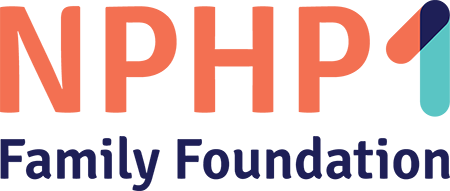A Year in Review – Assembling the Pieces for a Cure
A Year In Review: Drug Assembly, Not Drug Discovery
Thank you for your continued support of the NPHP1 Family Foundation. In this edition of our newsletter, we’re thrilled to recap the work we’ve done this year to build and galvanize a network of partners willing to help us accelerate the development of an NPHP1 gene replacement therapy for the retina.
As we’ve had conversations about what we’re doing, a theme that has struck a chord with people is this: This is drug assembly, not drug discovery. We’re simply putting the pieces together.
Against that backdrop, the prospect of putting those essential, sight-saving pieces together feels equal parts urgent and achievable. What’s required is known. The science is there. And the avenues to do it are open — if we can navigate them.
So that’s what we’re going to do. And we are forever grateful for your support in that process.
Advancing the Science
This year we…
Developed iPSC cell lines from skin samples collected from Davidson and Caryn.
Cryo-recovered mice with the NPHP1 retinal phenotype for testing.
Learned of a Chinese research team that performed a successful NPHP1 retinal gene replacement therapy proof of concept in mice — and found a U.S. lab working with the same mouse model.
Engaged with four academic labs and one commercial partner interested in taking on our project.
Are presently in the contracting phase with one of these labs, which we are very excited to share more about after the start of the New Year.
Forming Partnerships
Over the last 12 months we have also:
Engaged with the non-profit biotech firm, Odylia, to guide our drug development effort.
Secured participation from world-class researchers on our Scientific Advisory Board. (Seriously, we have some major “gets” on this board.)
Advocating for this Community
In 2024 we:
Spoke about the rare disease patient experience to the U.S. Food and Drug Administration as part of its Rare Disease Innovation Hub initiative.
Petitioned the IRS to allow parents of rare disease patients to use 529 college savings plan funds for rare disease research with preferential tax treatment and without incurring the traditional early withdrawal penalties.
Identified potential legislative, industry, and trade association partners in this effort.
Learning from Others
Also in 2024, we:
Held informational meetings with the FDA, NCATS at NIH, and the Bespoke Gene Therapy Consortium (a joint FDA–NIH effort).
Attended the National Organization for Rare Disorders annual meeting.
Participated in Rare Bootcamp, hosted by Ultragenyx, to learn more about the drug development process.
We connected with dozens of rare disease and biotech organizations, including: Alexion Pharmaceuticals, Astellas Pharmaceuticals, Elipda Therapeutics, Estuary Bio, Everlume Bio, Every Life Foundation for Rare Disease, Foundation Fighting Blindness, GenSight Biologics, Global Genes, Hope in Focus, Iveric Bio, Mahzi Therapeutics, Orbis International, Ray Therapeutics, Regeneron Medicine, Save Sight Now, Spark Therapeutics, and more.
Caryn’s Pitch – Rare Disease Bootcamp
Davidson is the pitcher in the family, but at “Rare Disease Bootcamp” last month, Caryn had to pitch our foundation to participants and ask for support. Here’s what she said:
“I am not a baseball player. But my son is. He’s 12 years old. He’s a pitcher and a third baseman. And he is obsessed.
My name is Caryn Alagno, and I founded the NPHP1 Family Foundation because my son, Davidson, is going blind.
Davidson is going blind because he’s missing the NPHP1 gene. We are funding the development of a gene replacement therapy that will keep Davidson playing baseball and stop this blinding disease in its tracks.
I want you to join us. Today I’m going to tell you what we have going for us and why we’re going to be successful.
We have these things going for us: the NPHP1 gene fits on an AAV vector — only about 100 genes in the body do. There are mice with Davidson’s exact genetic mutation. We have collaborators who see a clear path forward and are bullish on the biology.
What we’re doing is really drug assembly, more than drug discovery. We’re just putting the pieces together.
Why will we be successful? We’re talking about a gene therapy for the eye, which has been done before. We’re following the same playbook. We have a non-profit biotech guiding our efforts. And we’re already engaging with the FDA.
Today, my son, Davidson is in sixth grade. When we are successful, he will play baseball in high school. He’ll do whatever he wants. He’ll have a future that’s dictated by his hard work and his decisions – not the decisions his genes have made for him.
No child should confront vision loss. By being part of our team, together, we’ll make sure they don’t have to. Our focus is blindness, and our cure is - most certainly - in sight. Join us.”
Looking Ahead
2025 promises to be as busy as 2024 was - and that’s important. Our mouse research will begin in January and we will have early data to begin our formal interactions with the FDA by mid-year. This data will also allow us to begin to apply for critical grant funding to continue our program.
Look for updates via this newsletter, our website and our LinkedIn page.
We’re doing this - together - and we’re making so. much. headway.

